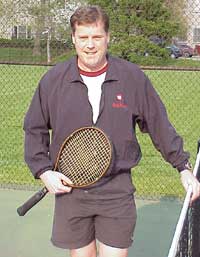Evolution of the Two-Handed Backhand: Part 2
Brian Gordon, PhD
Stroke Mechanics - Development Kryptonite
With the fundamental BH2 approaches outlined in part one of the August issue (Click Here), we now have a framework to assess the pro strokes. Given the goals of this article, the Type 1 BH2 is not relevant. I will start with Alcaraz, then classify Agassi to assess the similarities. Much has been made recently about changes to the Alcaraz BH2. The encouraging thing to me is he is willing to make changes.
I’m always puzzled by how resistant developing players are to even the slightest swing changes. In my day job I have a robust schedule of consulting and coaching accomplished competitive junior and college players. They freak out at even a suggestion of making a simple technical change. It seems they have been thoroughly indoctrinated into the “paralysis by analysis” ideology.
In contrast, the pro level players (futures, challenger, tour) I consult enthusiastically value improving their mechanics. Similar to athletes in most other sports, a significant number of top tennis players in the world (with everything to lose) are constantly implementing adjustments – including draconian changes. I could (but won’t) cite countless examples but Alcaraz is certainly one.
Carlos Alcaraz
In 2024 Alcaraz used a classic T3B swing. A pretty full hook loop with an outside racquet orientation. This implementation was characterized by a smooth transition to the forward swing and extensive dynamic slot (flip). The slot extent was tactically based on shot output. The slot mechanics were optimized in the forward swing with a flip-straight top arm.




